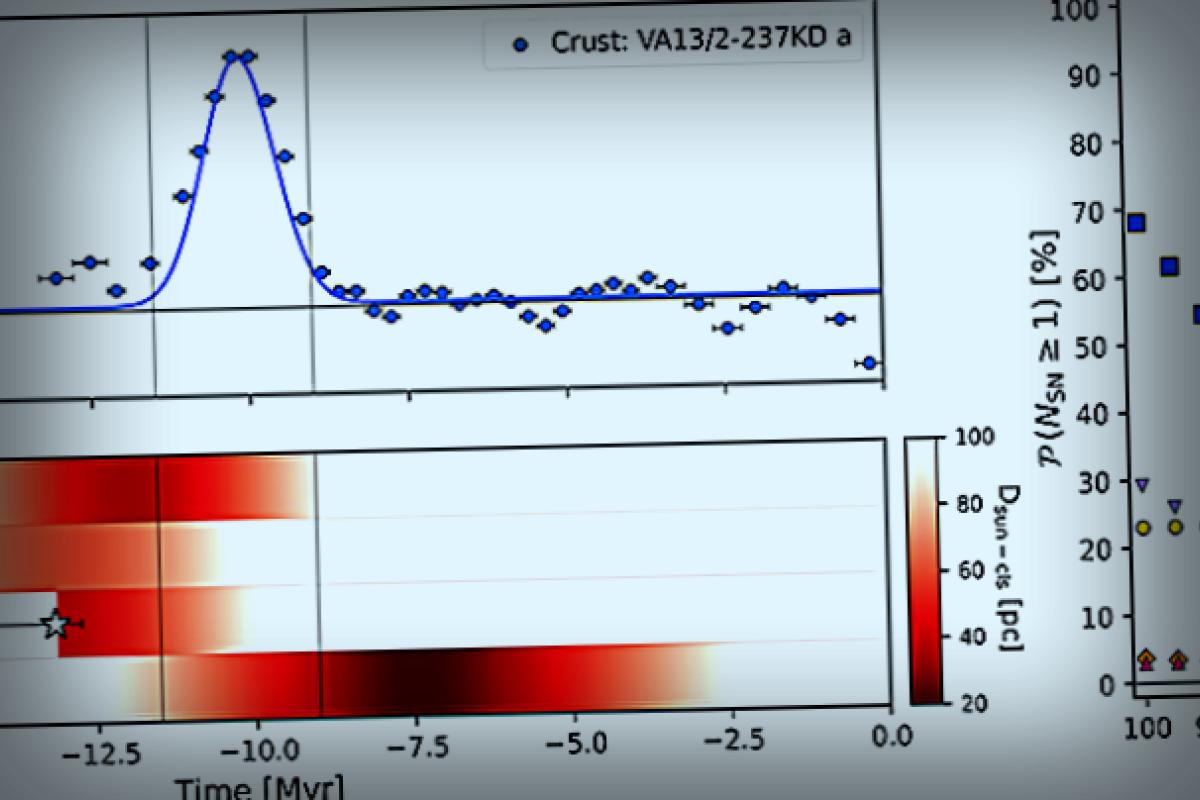So, here’s a wild idea: what if a big star went kaboom and its remnants hit Earth around 10 million years ago? Sounds like sci-fi, right? But scientists might be getting closer to cracking this puzzle. They’ve stumbled upon an unexpected concentration of Beryllium-10 (10Be) sitting at the bottom of the Pacific Ocean, potentially linked to the death throes of a supernova.
Stay updated on the latest sci-tech happenings by joining our newsletter.
Beryllium-10 is no ordinary isotope; it’s a like a cosmic relic created when particles from deep space slam into the atmosphere. Earlier this year, a team led by Dominik Koll from Helmholtz-Zentrum Dresden-Rossendorf in Germany decided to investigate these isotopes in ancient ocean crusts to decode their age. What they found surprised them: a massive spike in 10Be from around 10 million years ago.
Various theories could explain this influx—like it being carried in by shifting ocean currents—but some scientists figured it might be something more explosive. They suspected that a titanic star might’ve exploded near our Sun and sent that Beryllium scattering.
To explore this theory, Efrem Maconi and his research gang from the University of Vienna followed the Sun’s historical path and tracked over 2,700 star clusters spanning two decades. They wanted to pinpoint if one of those stars went supernova close enough to Earth (within 100 parsecs, which is about 326 light-years) coinciding with the infused 10Be levels.
The results? They found a 68% chance that a massive star might have exploded within that 100 parsec radius during the time of the 10Be spike. The odds drop to only 1% if they look a little closer, to around 35 parsecs (or 114 light-years). They even identified 19 star clusters where at least one supernova had a greater than 1% chance of occurring within that same range.
In their study, published in Astronomy & Astrophysics, the scientists expressed enthusiasm: “Our findings lean towards a supernova source for the 10Be anomaly and emphasize the need for more 10Be data from other worldly archives to ascertain if this anomaly stems from the cosmos or is more terrestrial in nature.”
They also highlighted two main suspects for the monumental explosion: ASCC 20 and OCSN 61, which are clusters found in the Orion star formation zone.
While this research adds weight to the cosmic explosion theory, the mystery remains partly solved. For closure, scientists need to confirm the 10Be anomaly in other ocean depths globally, which could imply a universal explanation like a supernova event. If the Pacific is the only region showing this increase, then it likely points toward more earthly developments like shifting ocean currents.
This article was crafted for you by our writer Paul Arnold, edited by Lisa Lock, and checked by Robert Egan. Your readership helps us maintain such independent science journalism. If you find this info valuable, please consider making a donation.
Further Reading: E. Maconi et al, The Late Miocene 10Be Anomaly and the Possibility of a Supernova, Astronomy & Astrophysics (2025). DOI: 10.1051/0004-6361/202556253
© 2025 Science X Network
This content originally appeared on Phys.org.



















